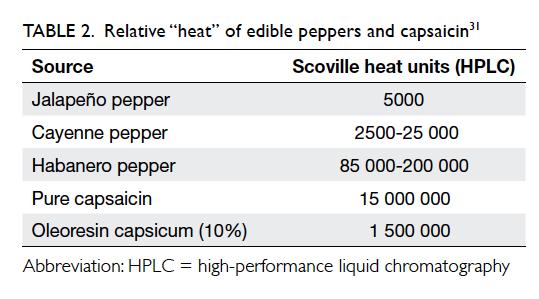Table of Contents
- Rising Pepper Spray Use and Its Impact on Urban Ecosystems
- Chemical Compounds in Pepper Spray and Their Environmental Persistence
- Effects on Local Wildlife and Aquatic Life from Increased Pepper Spray Exposure
- Strategies for Mitigating Environmental Damage While Addressing Public Safety Concerns
- In Conclusion
Rising Pepper Spray Use and Its Impact on Urban Ecosystems
The increased deployment of pepper spray in urban environments is creating unforeseen challenges for local flora and fauna. When dispersed, the active chemical compounds not only incapacitate individuals but also linger in air and soil, potentially disrupting delicate ecosystems. Recent studies indicate that vegetation exposed to pepper spray residues shows signs of stress, including inhibited photosynthesis and stunted growth, which can compromise urban green spaces critical for biodiversity. Moreover, airborne particles can irritate or harm birds and small mammals, leading to behavioral changes and reduced reproductive success.
Environmental experts urge municipalities and law enforcement agencies to consider sustainable alternatives and mitigation strategies. Some notable concerns include:
- Contamination of water runoff leading to aquatic toxicity
- Negative effects on pollinators essential for urban gardens
- Long-term soil degradation affecting community parks and recreational areas
Chemical Compounds in Pepper Spray and Their Environmental Persistence
Pepper spray primarily contains oleoresin capsicum (OC), an oily extract derived from chili peppers, which is suspended in a solvent typically comprising alcohol or water-based carriers. Alongside OC, formulations often include propellants such as hydrofluorocarbons or inert gases for aerosol delivery. While OC itself is biodegradable, the accompanying chemical agents, particularly the synthetic solvents and propellants, pose significant challenges for environmental degradation. These compounds tend to persist in soil and water, resisting natural breakdown processes and potentially disrupting ecosystems due to their toxicological effects on flora and fauna.
Recent studies indicate that residues may linger for weeks to months depending on environmental conditions, with soil contamination and aquatic toxicity being of primary concern in urban areas experiencing frequent use. Key environmental impacts include:
- Alteration of microbial soil communities, crucial for nutrient cycling and soil health.
- Bioaccumulation risks in small aquatic organisms, impacting food chain dynamics.
- Potential contamination of groundwater sources through runoff, with long-term exposure implications.
Effects on Local Wildlife and Aquatic Life from Increased Pepper Spray Exposure
Increasingly frequent deployment of pepper spray in urban and suburban environments raises serious concerns about unintended consequences for local wildlife. Birds and small mammals, which often inhabit areas proximate to human activity, are particularly vulnerable. Exposure can cause intense irritation to respiratory pathways and mucous membranes, leading to disorientation, impaired mobility, and in some cases, prolonged distress that hampers their ability to find food or evade predators. Studies have highlighted that even diluted residues left on vegetation or soil surfaces may persist long enough to affect species that rely on these habitats for shelter and sustenance.
Aquatic ecosystems are equally at risk due to the runoff of pepper spray chemicals into water bodies following rain or routine cleaning efforts. Components of the spray, such as capsaicin and various solvents, exhibit toxic properties that disrupt the delicate balance of aquatic life. Fish and amphibians may suffer from respiratory stress and behavioral changes, impairing reproduction and increasing mortality rates. Some key impacts include:
- Altered fish schooling behavior, making them more susceptible to predators
- Reduced amphibian larval development speed, threatening population sustainability
- Damage to aquatic plant life, which serves as critical habitat and oxygen source
Strategies for Mitigating Environmental Damage While Addressing Public Safety Concerns
To successfully balance the imperatives of public safety and environmental preservation, law enforcement agencies must adopt innovative approaches to pepper spray deployment. One effective strategy involves the development and utilization of eco-friendly formulations that reduce chemical toxicity and environmental persistence. Manufacturers are increasingly focusing on biodegradable ingredients and non-toxic carriers, minimizing harmful residues that contaminate soil and water sources. Additionally, training officers in precise, controlled application techniques can limit overuse and prevent unnecessary dispersal, thereby lessening the environmental footprint.
Beyond product improvement and tactical shifts, policymakers and stakeholders can implement regulatory frameworks that mandate comprehensive environmental impact assessments prior to approving new irritant sprays. This includes establishing monitoring programs to track ecological effects in urban and natural settings, together with public reporting channels to ensure transparency and accountability. Collaboration with environmental scientists and community groups further strengthens mitigation efforts, fostering a multidisciplinary approach that protects both human welfare and ecosystems.
In Conclusion
As the use of pepper spray continues to rise as a means of self-defense and law enforcement, its broader environmental implications warrant closer scrutiny. While effective for immediate threat deterrence, the chemical compounds released pose potential risks to urban wildlife, water systems, and air quality that are often overlooked. Moving forward, policymakers and public safety officials must balance the benefits of pepper spray with responsible usage guidelines and invest in research to fully understand and mitigate its environmental impact. Only through informed strategies can society ensure that efforts to protect individual safety do not come at the expense of ecological health.Check Our Other Blogs
- StunGun – Your Trusted Source for Stun Guns, Laws, and Self-Defense Tips
- PepperSprayLaws – Your Trusted Resource for Pepper Spray Information
- StunGunLaws – Your Trusted Guide to Stun Gun Legality and Safety




